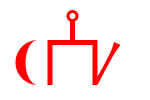Kipchak Turkic language spoken by the Cumans (Polovtsy, Folban, Vallany, Kun) and Kipchaks; the language was similar to today's various languages of the West... 9 KB (813 words) - 01:40, 22 February 2024 |
 | Cumania (redirect from Cuman–Kipchak confederation) The name Cumania originated as the Latin exonym for the Cuman–Kipchak confederation, which was a tribal confederation in the western part of the Eurasian... 20 KB (2,462 words) - 23:42, 10 April 2024 |
Georgia Cuman people Cuman language Cumania Kalpak Except for the Southern "dialect", which is classified among the Western Oghuz languages despite its... 6 KB (310 words) - 23:27, 26 March 2024 |
 | Kumyk language belongs to the Kipchak-Cuman subfamily of the Kipchak family of the Turkic languages. It's a descendant of the Cuman language, with likely... 21 KB (972 words) - 17:21, 28 January 2024 |
 | Kipchaks (redirect from Kipchak-Cuman confederation) the Isfendiyarids Beylik. The Kipchak–Cuman confederation spoke a Turkic language (Kipchak language, Cuman language) whose most important surviving record... 39 KB (4,481 words) - 09:20, 24 March 2024 |
Kipchak–Cuman language family in Linguist List. Byzantine princess Anna Komnene asserts that the Pechenegs and Cumans spoke the same language, while Mahmud... 3 KB (233 words) - 19:20, 23 March 2024 |
 | Codex Cumanicus (category Cuman language) dictionary, information about the Cuman grammar, and poems belonging to Petrarch. However the codex referred to the language as "Tatar" (tatar til). The first... 9 KB (810 words) - 19:26, 4 April 2024 |
k.a. Chimbu, spoken in Papua New Guinea Cuman language, an extinct Turkic language once spoken by the Cumans in the steppes of Eastern Europe This disambiguation... 344 bytes (80 words) - 01:41, 7 April 2024 |
 | Kunság (category Cumans) of a second and final Cuman colonization in Hungary; while not the only Cuman-inhabited area, it remained the only centre of Cuman self-rule after the end... 50 KB (6,385 words) - 13:05, 10 March 2024 |
 | ISO 15924: Orkh) for Old Turkic language Old Uyghur alphabet (ISO 15924: Ougr) for Old Uyghur language Cuman language (Latin) Karamanli Turkish written... 7 KB (142 words) - 18:44, 20 February 2024 |
closely related to the Kipchak–Nogay languages.[citation needed] Kipchaks Kipchak languages Cumans Cuman language Polivanov, Evgeny Dmitrievich (1935)... 4 KB (264 words) - 16:42, 31 May 2023 |
 | Asen dynasty (category CS1 Bulgarian-language sources (bg)) Kaloyan. Cuman origin, as some of the names in the dynasty, including Asen, are derived from Cuman language, as well as the close ties to the Cumans, such... 15 KB (1,690 words) - 14:14, 2 August 2023 |
 | Crimean Tatars (category CS1 Romanian-language sources (ro)) ethnogenesis of Crimean Tatars occurred during the 13th–17th centuries, uniting Cumans, who appeared in Crimea in the 10th century, with other peoples who had... 120 KB (11,712 words) - 22:43, 17 April 2024 |
The Cumans, also known as "Polovtsians", were a Turkic nomadic people comprising the western branch of the Cuman–Kipchak confederation. Their homeland... 34 KB (4,217 words) - 07:34, 14 February 2024 |
 | Teleorman County (category Articles with Romanian-language sources (ro)) Turkish, Deli orman) and, by extension, "thick and shadowy forest" in the Cuman language. It can be encountered in other toponyms, such as the Turkish name of... 18 KB (977 words) - 04:42, 2 November 2023 |
Mamluk-Kypchak language belong to the Cuman-Kypchak group of Kipchak languages. Other Cuman-Kypchak languages include Kumyk, Karachai-Balkar, Crimean... 3 KB (209 words) - 11:42, 29 January 2024 |
 | Golden Horde (category CS1 Russian-language sources (ru)) Khanate or as the Ulus of Jochi, and it replaced the earlier, less organized Cuman–Kipchak confederation. After the death of Batu Khan (the founder of the... 134 KB (17,581 words) - 23:29, 14 April 2024 |
 | Ladislaus IV of Hungary (redirect from Ladislas the cuman) Ladislaus the Cuman, was King of Hungary and Croatia from 1272 to 1290. His mother, Elizabeth, was the daughter of a chieftain from the pagan Cumans who had... 30 KB (3,412 words) - 23:18, 15 January 2024 |
 | Yaropolk II of Kiev (category Articles containing Russian-language text) русских и замечательнейших особ их крови. — СПб.: Тип. А. Бенке, 1870. — С. 81–82. Cuman people Cumania Kipchak people Cuman language Kipchak languages... 6 KB (492 words) - 10:07, 26 January 2024 |
Kipchaks in Georgia (category Articles with Georgian-language sources (ka)) The Cumans-Kipchaks in Georgia are of an ancient nomadic Turkic people who inhabited large territories from Central Asia to Eastern Europe. They (the Cuman-Kipchak... 8 KB (1,040 words) - 21:23, 9 September 2023 |
Crimean Tatar dialects (category Articles containing Russian-language text) extinct Cuman. The middle dialect, although thought to be of Kipchak-Cuman origin, combines elements of both Cuman and Oghuz languages. The Cuman language arrived... 4 KB (438 words) - 05:18, 6 April 2024 |
Gagauz people (category CS1 Romanian-language sources (ro)) counter-argument to this theory is that the Cuman language and the Gagauz language were totally different languages. According to a version of this hypothesis... 44 KB (4,725 words) - 07:44, 5 March 2024 |
 | Crimean Khanate (category Articles containing Crimean Tatar-language text) Kypchak or Cuman language was created (named in Kypchak "tatar tili") – "Codex Cumanicus", which is the oldest memorial in the Crimean Tatar language and of... 60 KB (6,264 words) - 12:44, 30 March 2024 |
 | Köten (redirect from Jonas, King of the Cumans) romanized: Kotyan; Hungarian: Kötöny; Arabic: Kutan; later Jonas; fl. 1205–1241) was a Cuman–Kipchak chieftain (khan) and military commander active in the mid-13th century... 22 KB (2,737 words) - 12:58, 18 February 2024 |
 | Yañalif (category Articles with Russian-language sources (ru)) earliest written text in a Kipchak language, specifically the Cuman language, an ancestor of the modern Tatar language and written with Latin characters... 15 KB (1,351 words) - 20:24, 7 December 2023 |




